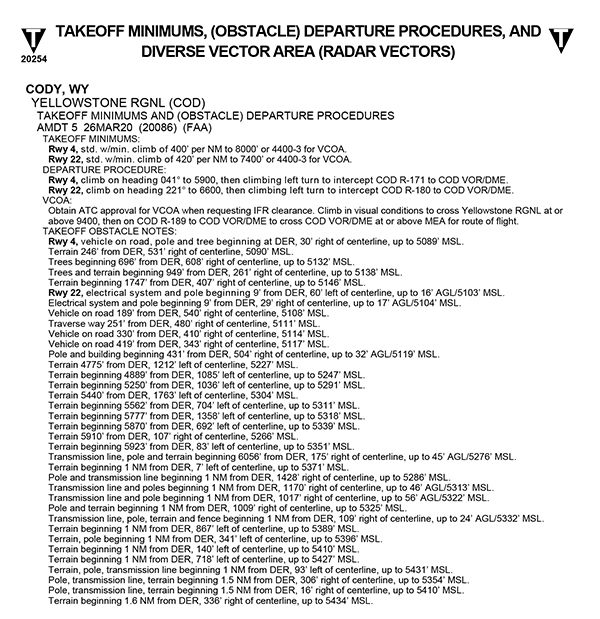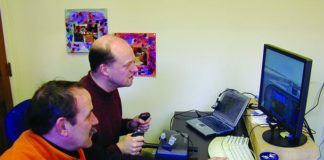Aviation makes us mission-minded. The whole point of these flying machines is to go somewhere and do something, even if that’s just practice following little black lines on the iPad so we can make pretty pictures on FlightAware.
That’s what makes practicing emergency returns so important and so frustrating. It’s not fair having something go wrong right after you enter the clouds. You were thinking way ahead of the airplane—but it wasn’t this scenario you were anticipating. It probably should be, so let’s do some flights that end before they get started.
You’ll need to set up failures. If you can’t set the failure to happen automatically, just do your best to create the failure on the fly, but try not to pause the sim too long.
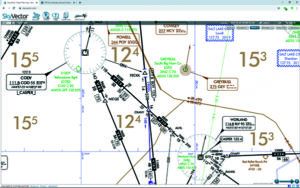
(Sim Challenges are often more about your procedures and your thought processes than physical skills. So, you should carefully consider each one before flying it. In fact, you might do better with a thorough arm-chair session before trying it in the sim. Good luck.)
Ol’ Unfaithful
Start on the ramp at Yellowstone, Regional (KCOD) in Cody, WY. Before you dial in some low IFR, set the weather for clear and take a look around the virtual world. Nice mountains, eh? Now make them go away with ceilings at 750 feet AGL and visibility of one mile. Make the winds 320 @ 6 at the surface, but crank ’em up to 320 @ 30 by 8000 MSL.
Set up your avionics as if you were heading down V319 toward Worland. You won’t make it that far, but this exercise works best if you set up your panel as you would to make a complete trip, especially if your primary navigation is GPS. (Who’s isn’t?)
Assume you got cleared as filed and make the long taxi to Runway 22. Before you depart though, call up failures on your sim and set your vacuum system (or attitude indicator if it’s a digital panel) to fail at 6600 MSL (or as close as you can make that happen).
Launch, climb, and … deal with it. Return to Cody partial panel.
An Abundance of Caution

Of course, problems don’t restrict themselves to mountain airports with high MEAs and few options. Reposition yourself to the heartland at Elkhart Municipal (KEKM) in Elkhart, IN. Pick a normally-aspirated bird you like to fly. Set the ceilings for stratus clouds down to 300 AGL and keep the visibility at a mile. Winds light-to-moderate out of the south as you see fit. Figure out how you’d fly up to Green Bay, WI, presuming you think over-water routes are only for those with death wishes or turbine power hanging off each wing.
Winds are light and you’re westbound, so Ground kindly sends you to Runway 27. Tower instructs you to fly runway heading and clears you for takeoff—but before you go, get a timer going with a one-minute countdown you can repeat each time it goes off. Now pour on the coals and depart.
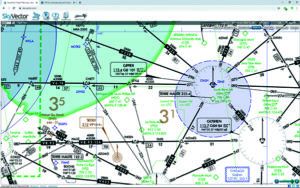
At 1500 feet MSL, reduce power by one inch of MP, or 100 RPM if your sim lacks a prop control, and start that timer. Return to the ground safely on an approach, but every time that one-minute timer goes off, reduce power by another inch (or 100 RPM) and reset the timer. In the real world, you’d have ATC vectors for this emergency. You’ll have to do your best to self vector with the moving map today.
Let’s see … that’s probably 28 inches at 1500 feet when you start. In eight minutes, you’ll be down to 20 inches and might be able to hold altitude. Five minutes after that you’d better be lined up with a runway, because you’ll be coming down pretty fast. Probably faster than you can hold a three-degree glidepath.
A Possible Turn
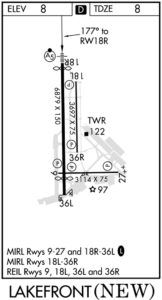
Last one and the most feared: Total engine failure in IMC. Set the fail-o-matic for complete engine failure at 1000 feet. MSL? AGL? Whichever, because you’ll put yourself at Lakefront Airport (KNEW) in New Orleans, LA.
Set the ceiling at 300 feet, the visibility at 3/4 miles, and the winds for 120 at 12. Yeah, that’s right. Winds from the southeast. Did you think you’d get to return over Lake Pontchartrain? Nah, there are no obstructions there. But you’ll make a nice splash if you over shoot, even left or right. Set yourself up as you see fit for any flight that would take you east and check the departure procedure to see what heading you fly after liftoff.
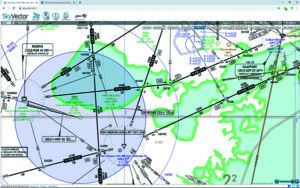
Taxi for Runway 18R. Depart. When the engine fails, count to five—that’s your reaction time for the unexpected—and then turn back to land. Hopefully that landing will even be on an airport.
If you’re successful, dial down the failure altitude until it can’t be done.
How’d You Do?
And how many tries did it take you to survive these? If the answers are, “No problem,” and, “Well, just one, of course,” then don’t bother with any more of these sim challenges. (Wanna write some for us?) If, however, you struggled like the rest of us, congratulations. Now, answer these questions to see if you considered everything.
1. You flew the KCOD ODP, right? What’s the climb speed for your airplane? Can you maintain that? How did you let ATC know you would fly the ODP?
2. If you used a GPS for the departure, how did you set it up?
3. How high are the ceilings for the VCOA? What do you do on the VCOA when you go IMC?
4. Which approach did you use to get back into Cody, the VOR-A or the RNAV Rwy 22? Did you use the autopilot?
5. Leaving KEKM if you had been given “on departure, fly heading 330,” when would you turn? Also: Could you have requested a departure from Runway 26?
6. What approach did you prepare for, and was it RNAV or ILS? What approach did you fly after the problem materialized? Could ATC help if you were so focused on the emergency you didn’t have time to call up an approach chart?
7. How did you handle vertical guidance given your engine problem? How could you stay high as long as practical without risking an overrun?
8. How’d you handle horizontal guidance back to KNEW? What could you have done to make it easier?
9. How did you handle vertical guidance?
10. How low could you lose the engine and still reach pavement? Any way to stretch the glide to the runway?
Your Plan, and the Other Plan
The real takeaway from this sim challenge is that the fickle finger of fate can necessitate Plan B before you even get rolling on Plan A. So … plan accordingly.
And since you crashed somewhere in New Orleans by the time this was over, go get yourself a nice bourbon. You’ve earned it.
1. The Runway 22 obstacle departure procedure (ODP) requires 420 feet per NM to 7400 feet, which is 2300 feet AGL. At 90 knots, that’s 630 feet per minute—which sounds pretty easy until you remember the altitude involved. You did lean before takeoff, right? Past 7400 MSL, you’ll still need 300 feet per minute to the MEA of the airway. As for telling ATC, you could have put “will fly ODP” in the remarks. It’s also good procedure on check in with ATC to say you’re flying the ODP.
2. Too many pilots revert to VOR navigation simply because there’s no point-to-point navigation in the ODP. You can do better by putting COD as the first waypoint in your flight plan and doing a direct-to on a course of 360—the inbound reciprocal of R-180 that you must intercept. Quick hack especially useful with 430/530s: Go direct-to COD, engage OBS mode, dial 360, disengage OBS mode. The inbound course shown should stay on 360. Now climb per the ODP in GPS nav mode and turn to intercept the course conveniently shown on the map. When you cross the VOR, sequencing will resume on its own.
3. The VCOA is to 4400 feet—which is 9500 feet MSL. That’s 1000 feet higher than the MEA down V-319. While the procedure is technically to circle up that far before heading on course, it seems reasonable that once you know you’re clear of terrain and can stay visual to the VOR, it’d be fine to head on course.
4. The VOR would be faster, no question … but is speed critical here? If your sim lacks GPS, then it’s the VOR for sure. However, the risk is losing control, and the direction changes needed for the procedure turn mean more likelihood of disorientation than the fewer turns on the RNAV approach. You’ll also get vertical guidance rather than a circle-to-land just below the cloud deck. If you didn’t lose the autopilot when you lost your AI, it can fly the whole approach for you, including a procedure turn (assuming you’ve got GPSS) if you need one.
5. You turn at 400 feet AGL as usual. It’s always good to check the departure procedures, however, just to know if there are restrictions. There’s no published departure procedure for KEKM, so you can climb 200 feet per NM in any direction, provided you cross the end of the runway at least 35 feet in the air and climb straight ahead to 400 feet AGL. As for departing from the turf of Runway 26, it was not surveyed (no mention in the departures section for low, close-in obstacles) so technically TERPs would frown. Would Tower care? Don’t know.
6. Given that the GPS was likely set up for your departure and the low ceilings, setting up an ILS for the emergency return does make sense. But which ILS did you choose? The ILS Rwy 27 back to Elkhart is logical, but it’ll be a long ride back around to the other side to come in on your departure runway. Maybe too long. Quickly loading the RNAV Rwy 9 is always an option, but you’ll have to bust minimums and have no vertical assistance. The ILS Rwy 27L into South Bend, however, is right under your nose. When planning for an emergency return, remember that your nearest safe option isn’t necessarily the airport you just departed; it might be another airport nearby—or straight ahead. ATC can help as they have access to approach charts, usually on a companion display to the radar. Ask for what you need and they can read it off to you.
7. If you just went straight ahead into South Bend, you probably had enough power available to fly a normal approach. However, you might choose to stay as high as practical, knowing your normal descent rate with your normal approach speed would be key. The two big strategies are either flying the approach faster to get on the ground sooner and with extra energy ready if you lose the motor entirely, or flying the normal speed but descending later and steeper. The first one is generally easier, but practicing and knowing when you have the runway made even on a glide is the secret to success. Also, a low-speed overrun is almost certainly survivable. Landing short of the runway … not so much.
8. With such a rapid turn back to the airport, preloading an RNAV approach might not be that helpful. You probably can’t activate it in time, and even if you could, it wouldn’t sequence if you’re turning inside the FAF, which you are. You’d still get some left-right guidance to line up with the runway, but it wouldn’t be ideal. You might try the localizer back course from the ILS 18R, and if you had an HSI, you’d correct normally toward the needle, saving yourself some mental energy. That might help with alignment more than anything else. The moving map is also great. Synthetic vision seems like a cool idea, until you try it for a close-in turn. It’s really difficult to judge anything that’s not right off the nose.
9. You’ll have no glidepath, but you’re coming down anyway, no matter what. However, it’s still helpful to have a bullseye on the runway end long before you see it. At least you’ll know how dire your situation really is. Once you’re turned back, syn vis can really help with this. You’ll see your target and whether you’re on a path to hit it, no matter how steep that path might be.
10. It’s a tough turn, especially with that wind. A bank of 45 degrees is generally considered your best balance between rate of turn and altitude lost. Given how long a runway this is, it’s possible you could find the minimum altitude for turnback is close to the maximum altitude for landing straight ahead. If you find you’re only 100-200 feet short of the runway on the turnback, try waiting until you’re about to flare before deploying flaps and then go full flaps. You might balloon and float just far enough to make up the difference.
Jeff Van West has yet to experience New Orleans bourbon, be it the drink or the street. He did buy a motorcycle in New Orleans once. He couldn’t resist. It was British racing green.

